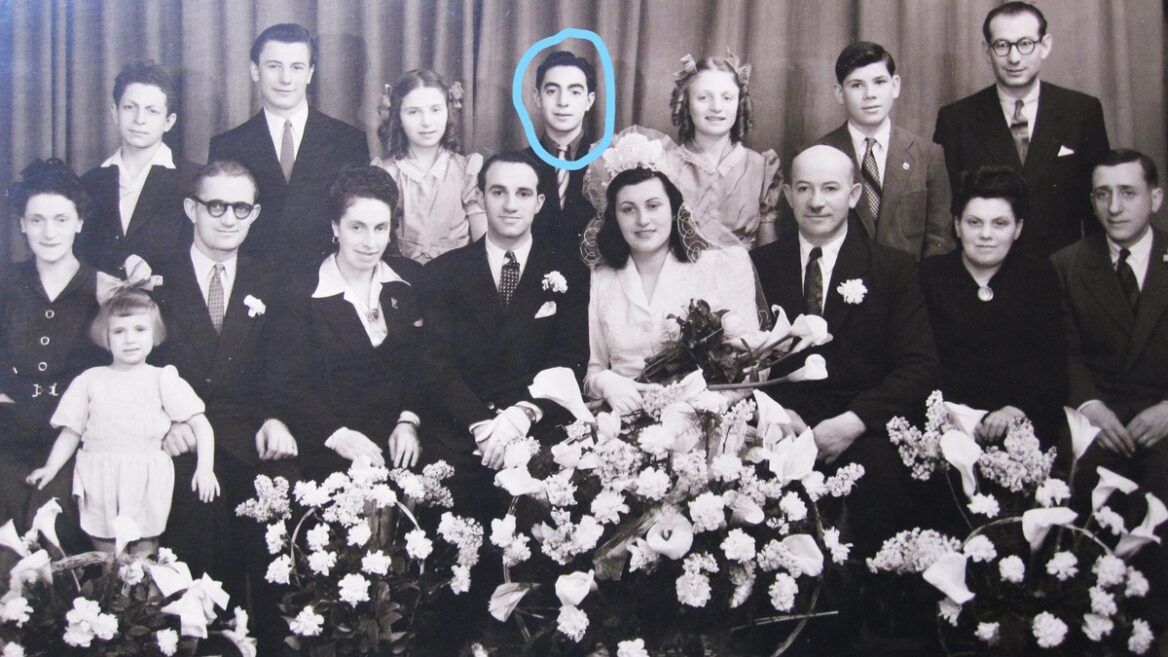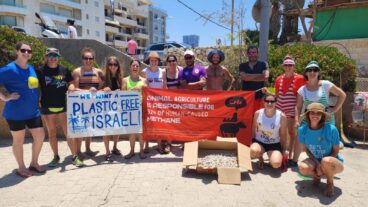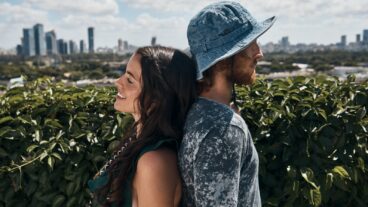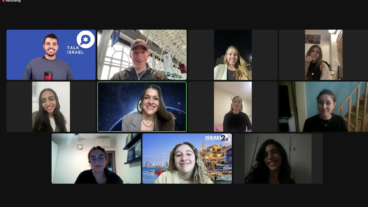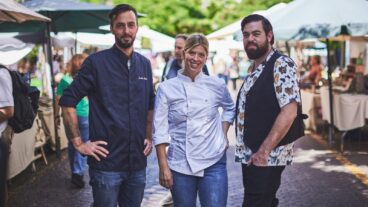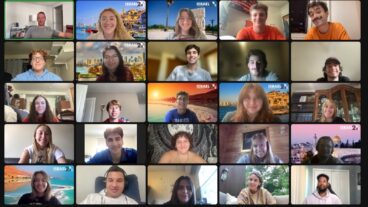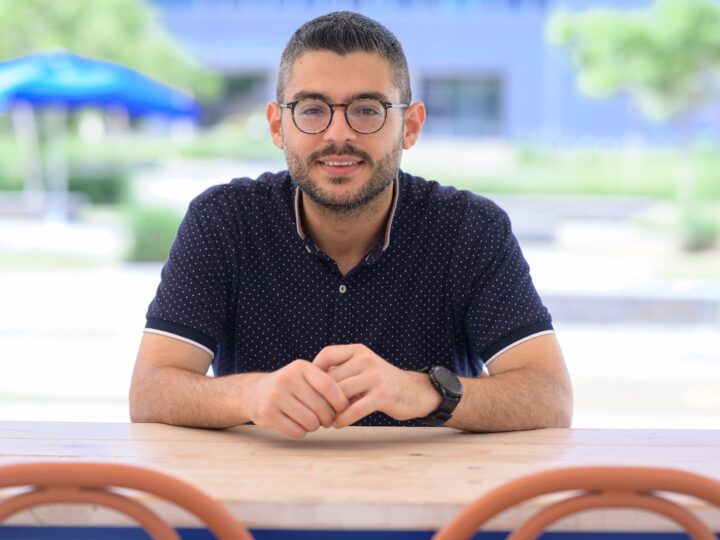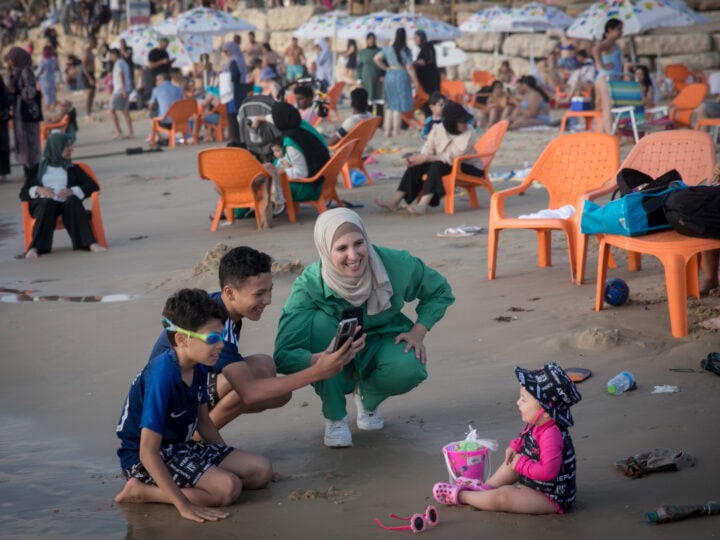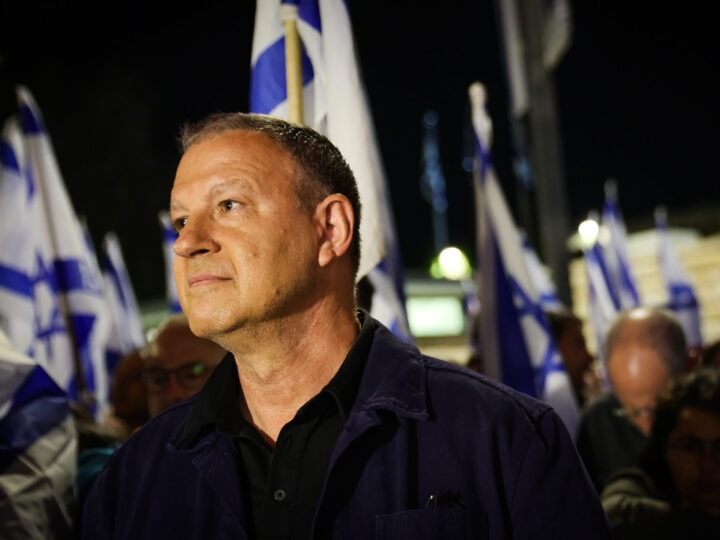Holocaust survivor Henri Fernebock was my mother’s pen pal from 1946 until 1948, when he came to Israel from Paris. She was a teenager in New York at the time.
Just 20 years old, he and 21 other soldiers in the Beit Choron Battalion were killed in the War of Independence on October 10, 1948.
A letter from my mother, Nancy Klein, was found on Henri’s body. The government informed her of his death and that was the last she heard of him.
Seventy-three years later, in October 2021, I wrote in ISRAEL21c about visiting Henri’s grave at Israel’s national military cemetery on Mount Herzl, Jerusalem.
One picture in that article shows a note on the grave placed by Doron Leitner, a volunteer from the organization Latet Panim L’Noflim (Giving a Face to the Fallen), seeking information about Henri, for whom there were only bare details and no photograph in the cemetery’s Hall of Remembrance.
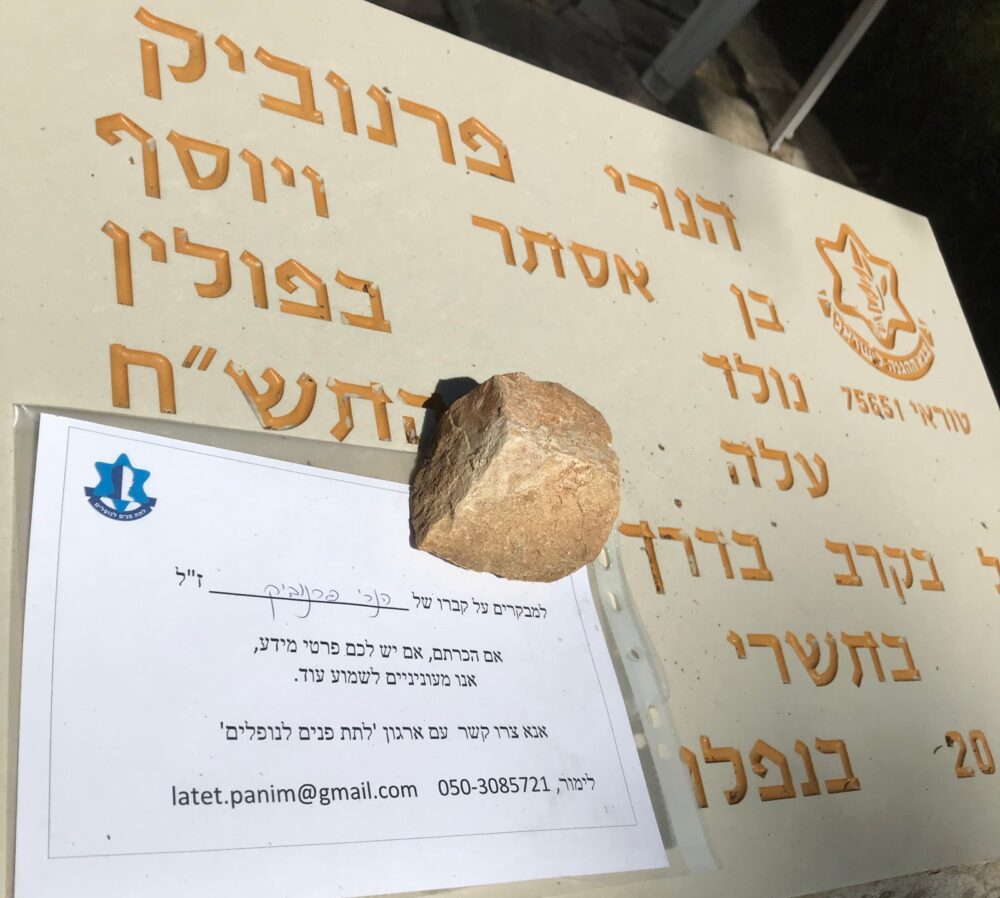
“Perhaps someone can provide more facts, even a picture, to help us – and the country he died defending — understand exactly who this hero was,” I wrote.
Never underestimate the power of the press.
Due to diligent detective work prompted by the ISRAEL21c article, Henri is no longer a faceless casualty.
A moving ceremony
Here’s what happened.
A family friend of ours in Jerusalem shared the ISRAEL21c story on Facebook. Her step-nephew in Brooklyn saw it and decided to do some genealogical digging using alternative spellings of Henri’s surname.
Within a short time, he sent Latet Panim L’Noflim information on a first cousin of Henri, Daniel Gersztenkorn in Paris, and another cousin, French émigré Emmanuel Lesgold of Jerusalem.
Neither cousin knew more than bits and pieces of Henri’s story, but Lesgold gave Latet Panim L’Noflim the family tree he’d created on Geni.
Volunteer Tamar Weinblum tirelessly combed various archives and genealogy sites. She met with Gersztenkorn in Paris, who directed her to Henri’s niece, also in France.
Weinblum called me in May to share that she had uncovered many previously unknown facts (summarized here) and even had a photograph of Henri.
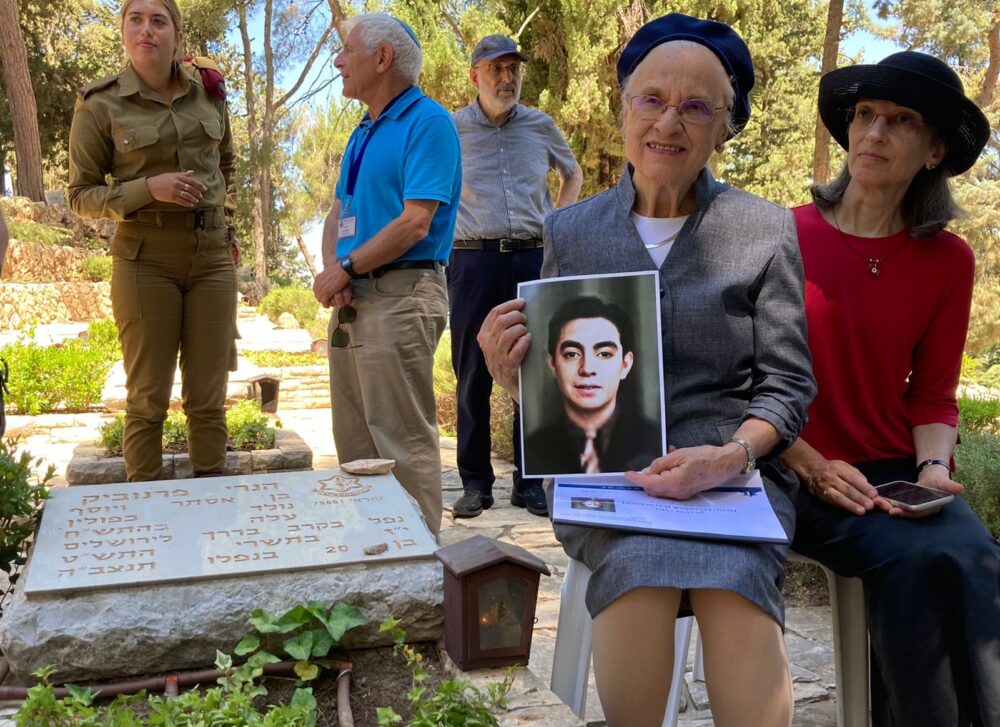
When I told her that my mother was coming from New York for a family occasion this summer, Weinblum decided to organize a ceremony at Mount Herzl.
And so on July 4, volunteers from Latet Panim L’Noflim watched as my mother, now 92, lit a memorial candle with Lesgold and saw a picture of Henri for the first time. She was interviewed live by Ynet.
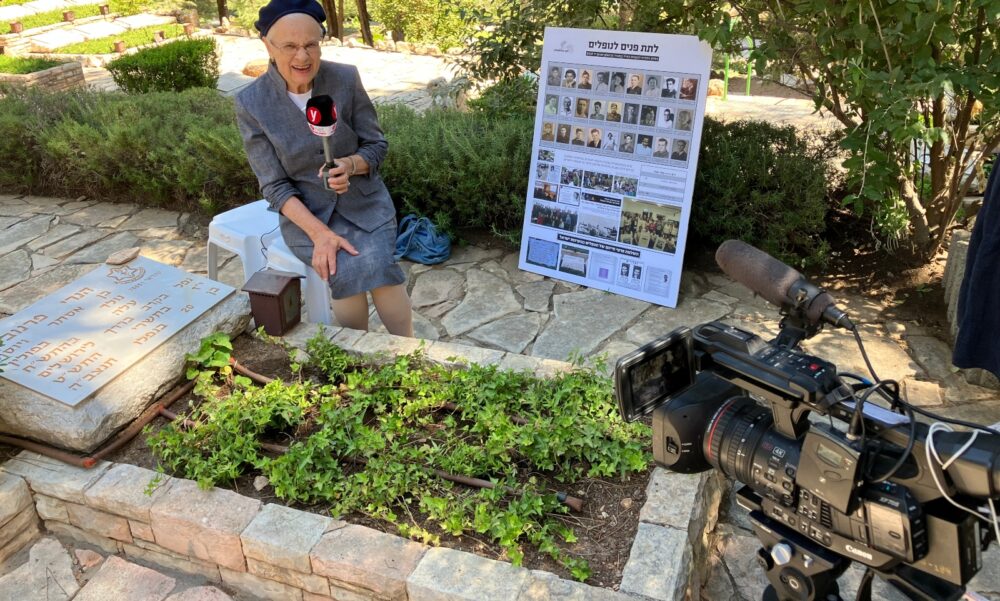
Lesgold commented that all the pieces of the puzzle coming together in Jerusalem from various countries highlights the unity of the far-flung Jewish people.
“Outside of this cemetery we are all apart, but we saw today that we are all connected,” he said, “and we must never forget it, ever.”
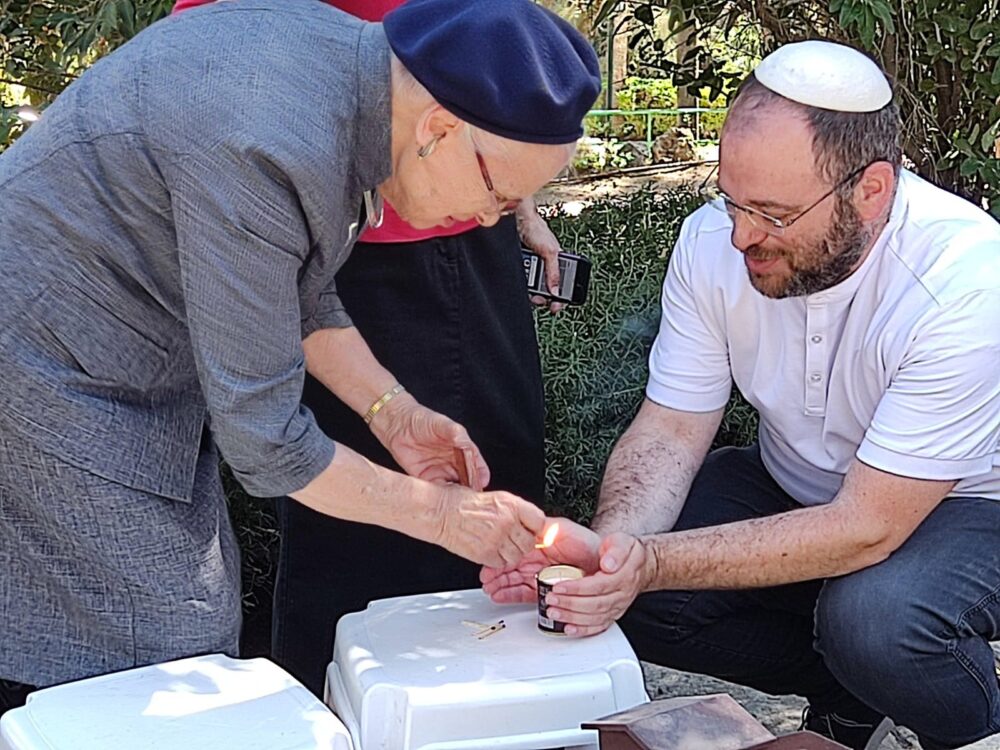
Finding Henri
Dorit Perry started Latet Panim L’Noflim about 10 years ago with her friend Uri Sagi to fill in missing details for 1,000 fallen soldiers buried at Mount Herzl.
Honoring the Israeli tradition of leaving no soldier behind, the group’s 25 multilingual volunteers have succeeded thus far in gathering dossiers on 270 of them.
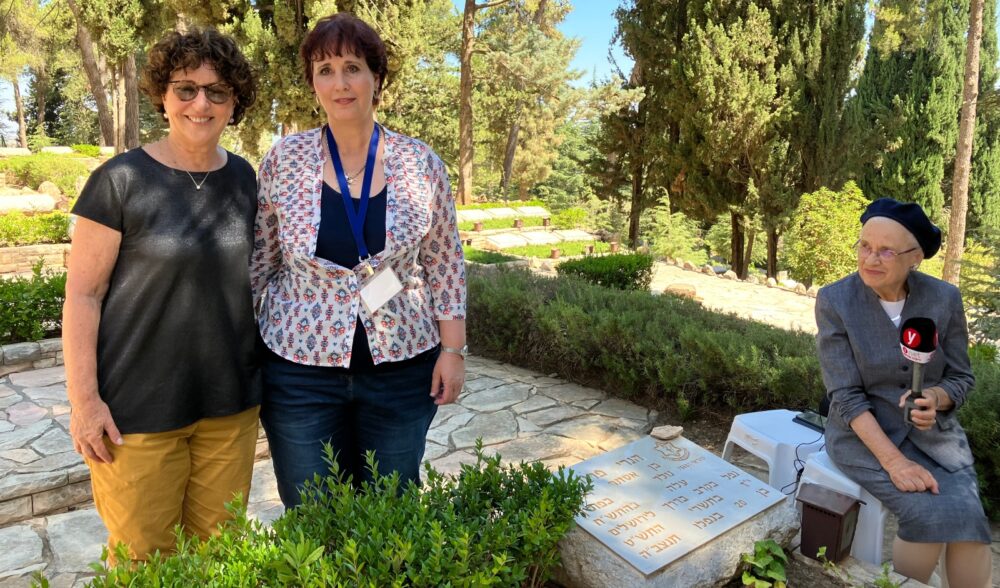
Perry contacted me when the details of Henri’s story started surfacing after being locked up inside his extended family’s wartime trauma.
“Your article opened everything!” she told me with obvious joy.
At the ceremony on July 4, Perry explained, “It is not easy work to find the life story of people born long ago in places such as Yemen and Syria, Czechoslovakia and Latvia. It’s very complicated.”
Perry emphasized that what matters most to her organization is “to put a face on the soldier, not just to learn the biographical details. And that’s the hardest part of our work: to find family members who may have a picture in their possession.”
Weinblum succeeded in this mission. She got a picture from Henri’s niece in France showing the family at the 1946 wedding of Henri’s maternal uncle, Lesgold’s grandfather.
Weinblum also discovered Henri’s Hebrew name – Avraham Chuna – given to him after his birth in Warsaw on August 15, 1928. That name will now be added to his tombstone and his surname will be corrected from Fernubick to Fernebock.
Around 1930, the Fernebocks moved to France, and Avraham Chuna became Henri.
His father was murdered at Auschwitz in 1942. Henri, his mother and two younger siblings survived the war in hiding but became separated due to their dire circumstances. Despite the photo from the wedding, the family never fully recovered from this rift.
Weinblum didn’t find Henri’s name in any ship manifest from 1948. She suspects he emigrated under a false name as he was a minor under French law. She is still searching for further information about his journey to Israel.
Closing a circle
Weinblum told Henri’s story at the gravesite on July 4, surrounded by a delegation of young soldiers.
One soldier recited psalms and sang the traditional memorial elegy. My husband, Steve, recited the Kaddish prayer – the first time it was ever recited at Henri’s grave as far as Lesgold knows, because it requires a quorum of 10.
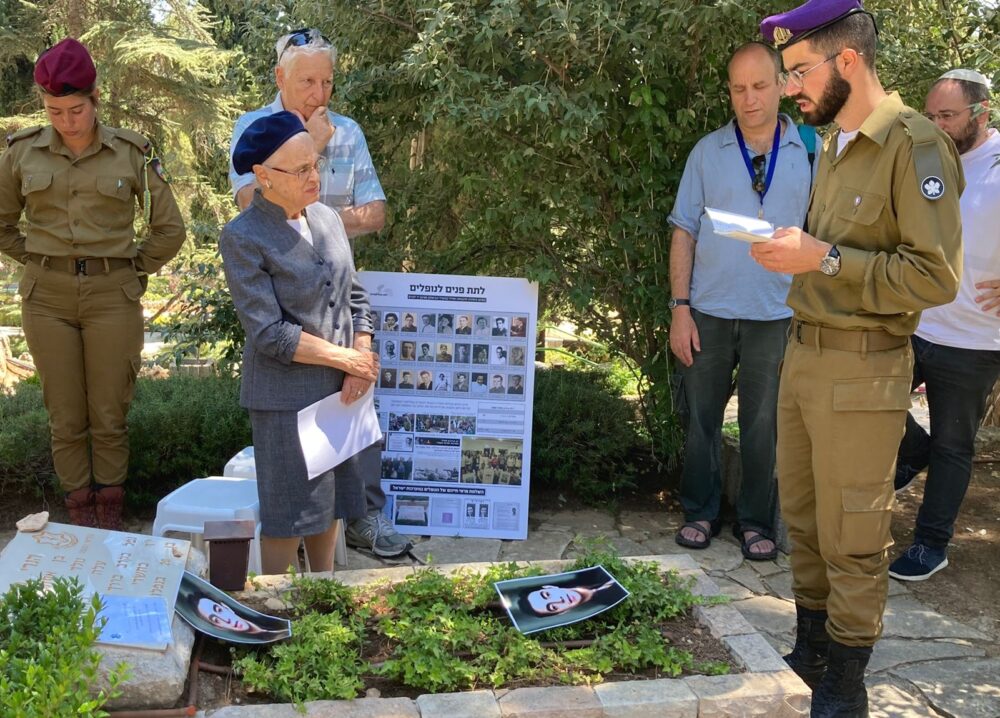
We proceeded to the Hall of Remembrance, where Lesgold and my mother lit a virtual candle for Henri and touched his memorial brick.
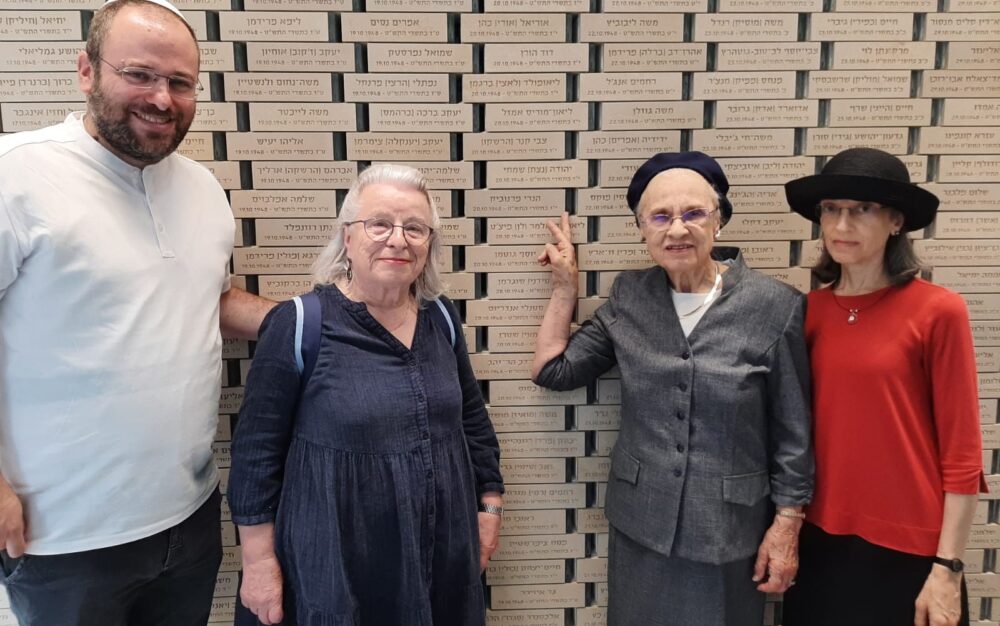
My mother said that the experience at Mount Herzl was nothing short of surreal.
She told Perry that when informed of Henri’s death, she felt terrible that he was gone and that she couldn’t fill in any blanks because she had not kept the letters she and Henri exchanged over the course of two years.
“I was 16 years old, and I did not realize how important this was,” she said. “I wish so much that I still had those letters.”
However, Lesgold told my mother, “This family, this teenager, was in a desperate state after the war. Maybe your letters did more [good] than you thought at the time.”
That was a very comforting perspective.
“I think because Henri suffered so much during the war and after, he was looking to have a normal conversation with young people,” added Weinblum.
“Yes,” said Perry, “your letters were a connection to the world for him, to somebody who cared.”
Learn more about Henri and Latet Panim L’Noflim here.




